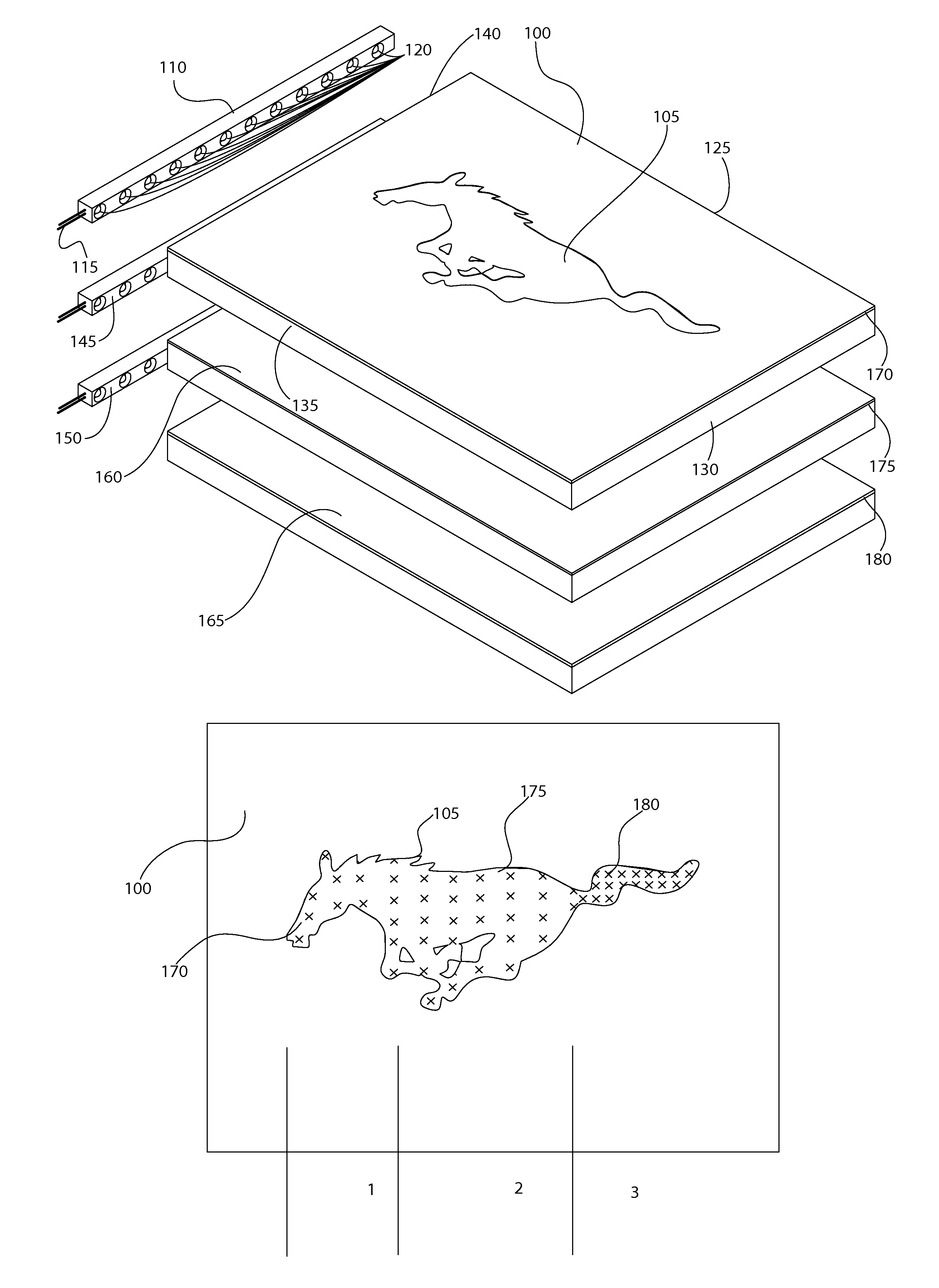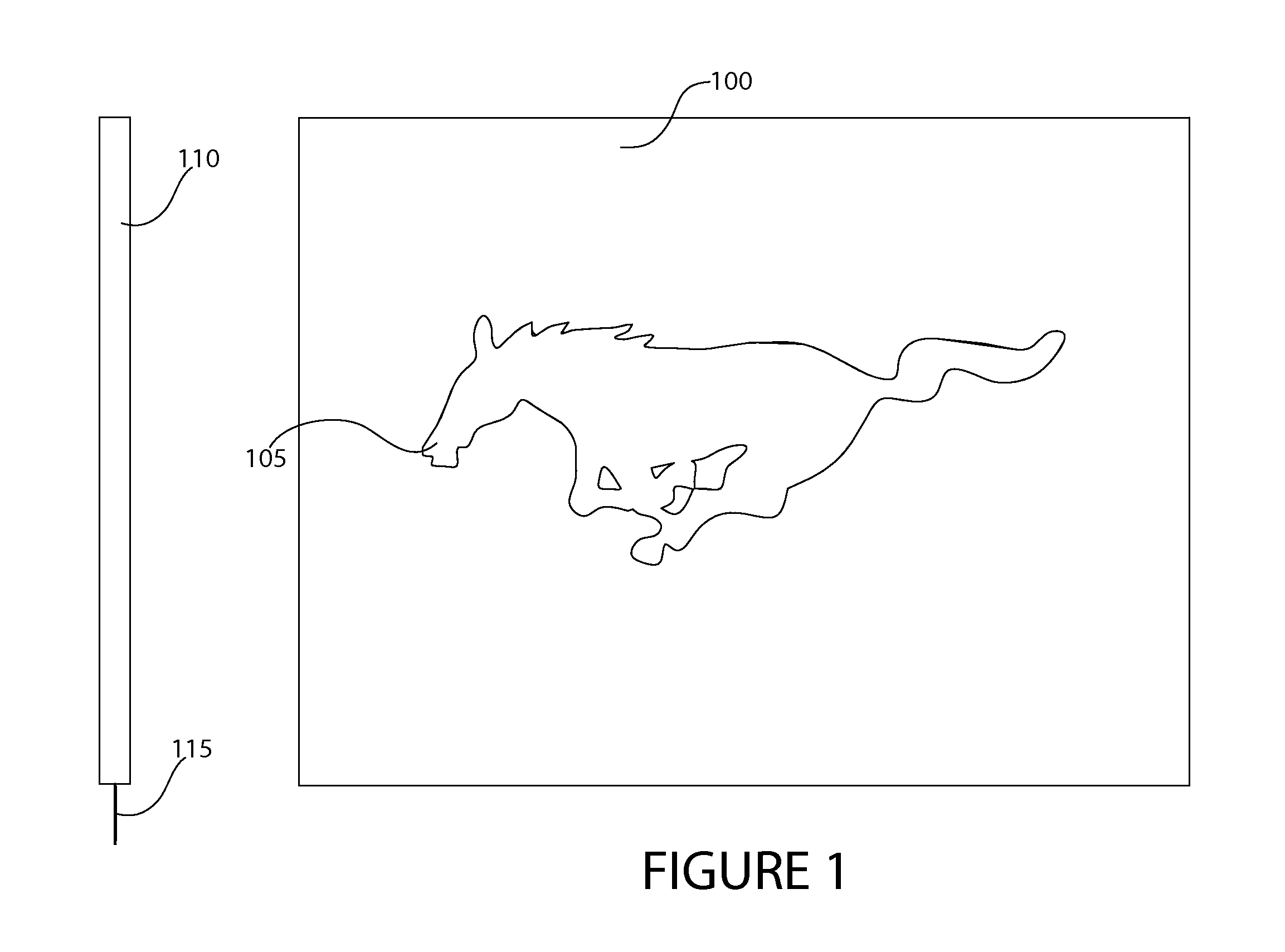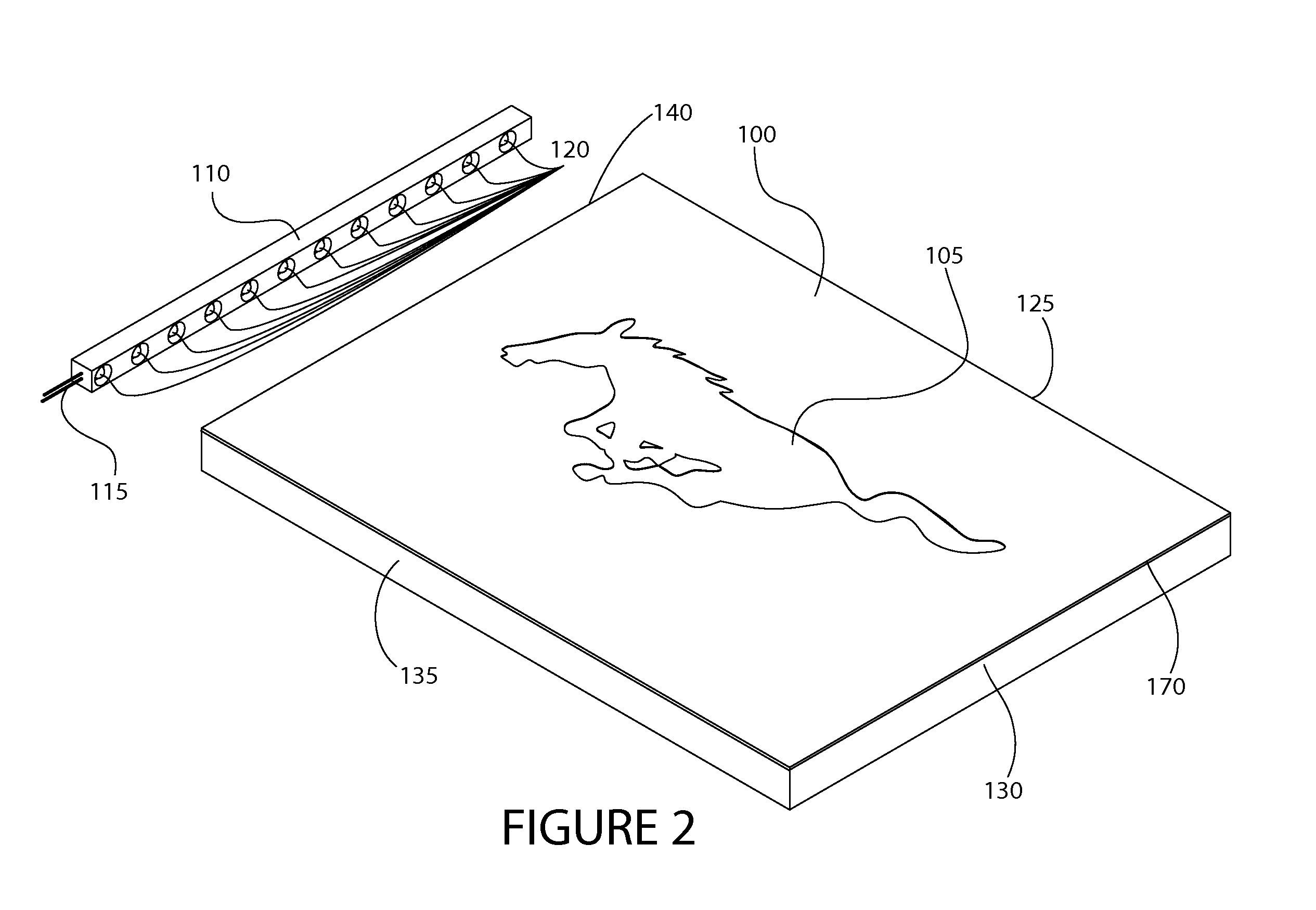Optimized distribution of light extraction from an edge lit light source
a technology of edge lit light source and distribution method, which is applied in the direction of electric discharge tube/lamp manufacture, lighting and heating apparatus, instruments, etc., can solve the problems of non-uniform light emission, non-uniform intensity light emission, and non-uniformity, and achieve reliable and easy-to-use methods , uniform illumination
- Summary
- Abstract
- Description
- Claims
- Application Information
AI Technical Summary
Benefits of technology
Problems solved by technology
Method used
Image
Examples
Embodiment Construction
[0022]Referring to the Figures, in which like parts are indicated with the same reference numerals, various views of exemplary edge-lit panel assemblies according to principles of the invention are shown. With particular reference to FIGS. 1 and 2, an exemplary edge-lit sign 100 comprises a panel of optical transmission medium such as glass, plastic (e.g., acrylic), polymethylmethacrylate or any other material suitable for an edge lit sign. In example embodiments, the panel comprises a material having a higher index of refraction than other surrounding materials, such that light is guided within the panel 100 by total internal reflection. Preferably the material is scratch resistant, such as hard (scratch resistant) acrylic. A vinyl layer may be applied to one or more surfaces (e.g., the face) of the panel for scratch resistance. The unlit panel edges 125, 130, 135 may be coated with a reflecting (or absorbing) layer to reduce the amount of light that escapes from the edges. The ref...
PUM
 Login to View More
Login to View More Abstract
Description
Claims
Application Information
 Login to View More
Login to View More - R&D
- Intellectual Property
- Life Sciences
- Materials
- Tech Scout
- Unparalleled Data Quality
- Higher Quality Content
- 60% Fewer Hallucinations
Browse by: Latest US Patents, China's latest patents, Technical Efficacy Thesaurus, Application Domain, Technology Topic, Popular Technical Reports.
© 2025 PatSnap. All rights reserved.Legal|Privacy policy|Modern Slavery Act Transparency Statement|Sitemap|About US| Contact US: help@patsnap.com



